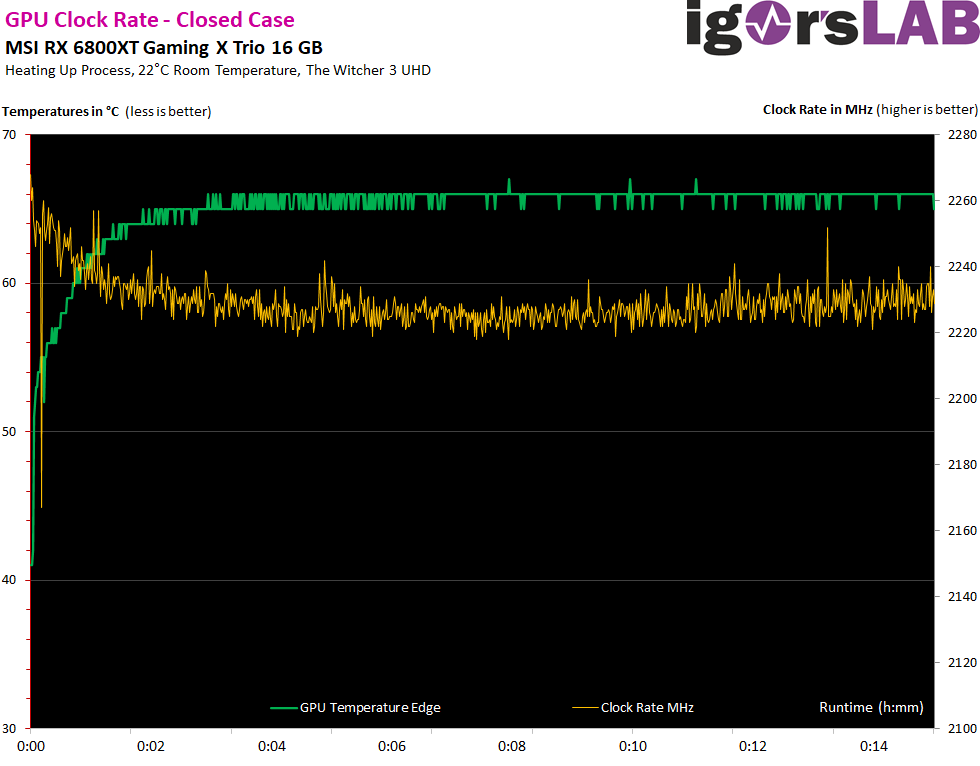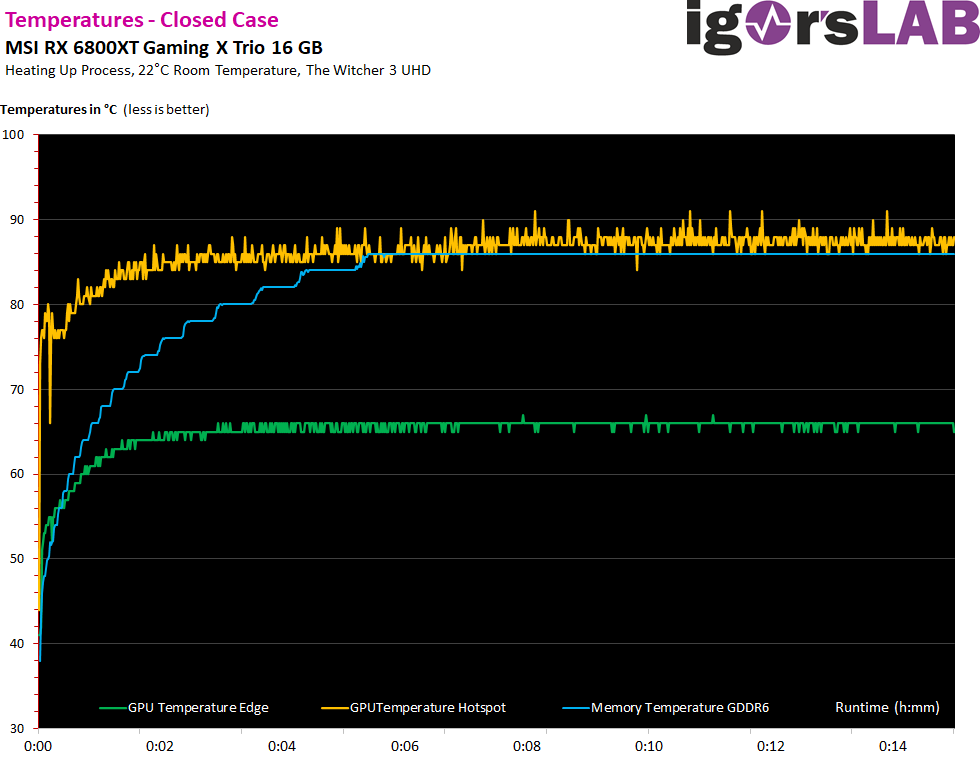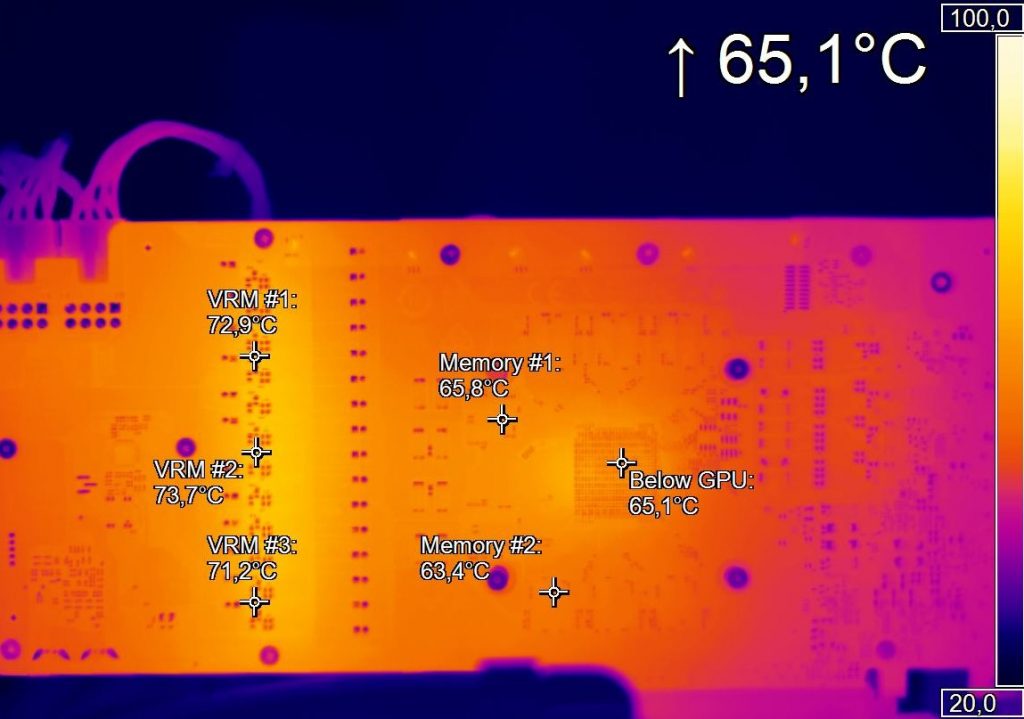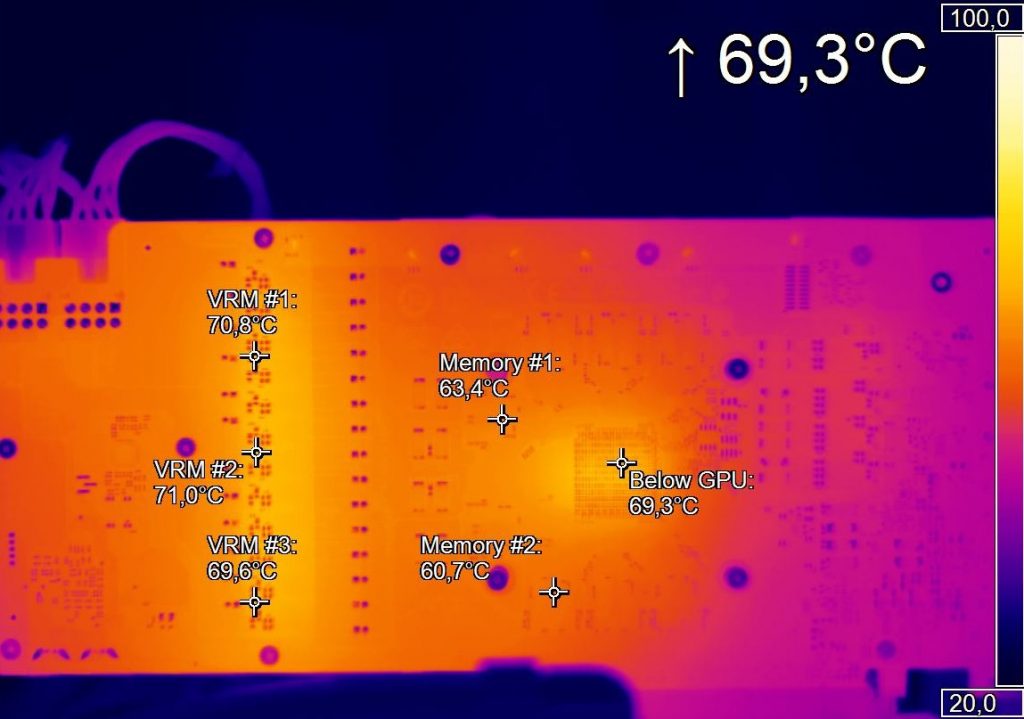Clock rates and overclocking reserves
The clock rate doesn’t even look bad. In Full-HD and also WQHD in places, the card already manages well over 2260 MHz ex works and even goes up to about 2300 MHz for a short time in places. Fully warmed up and in Ultra HD, it’s still between 2230 and 2340 MHz, depending on the game and load. If you increase the power limit by the maximum possible, then the clock rate can even be increased a bit, because it stabilizes up to 2350 MHz and even a bit above, depending on the chip quality. With over 380 watts via the MorePowerTool (330 watts TDP) and 15% more power limit in the Wattman, peak values of just over 2.5 GHz were also feasible, but that’s actually more for the gallery. The then due power consumption is no longer in relation to the performance, because the scaling decreases with the clock rate at some point.
Temperatures GPU and GDDR6 memory
Now let’s look at the temperatures. AMD still uses the so-called hotspot temperature internally, but now solves this much smarter and with more and cleverly positioned measuring points or sensors. The total can reach up to 110 °C at the peak, but in practice it was only just under 90 °C The “GPU diode”, internally called edge temperature by AMD (we also know it from NVIDIA), is significantly lower with values between 64 and 65 °C.
I was able to read out the GDDR6 with the help of a special engineering tool. It is interesting to note that there are even two values per memory module, since the memory also has twice the capacity and apparently outputs two sensors. From these 16 single values one weights then in the tool the memory temperature, which I have given you in the diagram once with. The memory remains, even in the long run, at a maximum of 86 °C inside (substrate), which is still an acceptable temperature. The highest readout values are likely to be generated by the two modules that are located above the power supply tracks and are only cooled by the heat pipes (lower contact pressure).
This is also proven very impressively by the IR images, where I intentionally ran the card without a backplate:
If you chase over 380 watts through the voltage converters, the GPU will warm up around 70 °C, but the voltage converters and RAM will actually get cooler, as the fans now audibly produce more throughput. We see, however, that the cooler can easily handle it, albeit with significantly more operating noise. So extreme OC is doable.
- 1 - Introduction, Unboxing and Technical Data
- 2 - Teardown: PCB, Power Supply and Cooler
- 3 - Gaming Performance
- 4 - Gaming Power Draw and Efficiency
- 5 - Power Consumption, Voltages and Standards
- 6 - Transients and PSU Recommendation
- 7 - Clock Rate, OC and Temperatures
- 8 - Fan Speed and Noise
- 9 - Conclusion and Final Words





































Kommentieren